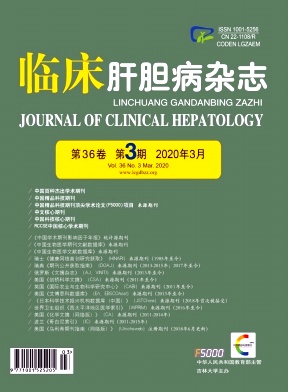|
[1] FERLAY J,SOERJOMATARAM I,DIKSHIT R,et al. Cancer incidence and mortality worldwide:Sources, methods and major patterns in GLOBOCAN 2012[J]. Int J Cancer,2015,136(5):e359-e386.
|
|
[2] MCGUIRE S. World Cancer Report 2014. Geneva,Switzerland:World Health Organization,International Agency for Research on Cancer,WHO Press,2015[J]. Adv Nutr,2016,7(2):418-419.
|
|
[3] PROUDFOOT N. Pseudogenes[J]. Nature,1980,286(5776):840-841.
|
|
[4] LUCO R F,MISTELI T. More than a splicing code:Integrating the role of RNA,chromatin and non-coding RNA in alternative splicing regulation[J]. Curr Opin Genet Dev,2011,21(4):366-372.
|
|
[5] MARTIANOV I,RAMADASS A,SERRA B A,et al. Repression of the human dihydrofolate reductase gene by a non-coding interfering transcript[J]. Nature,2007,445(7128):666-670.
|
|
[6] XIA T,LIAO Q,JIANG X,et al. Long noncoding RNA associated-competing endogenous RNAs in gastric cancer[J]. Sci Rep,2014,4:6088.
|
|
[7] SAEINASAB M,BAHRAMI AR,GONZALEZ J,et al. SNHG15is a bifunctional MYC-regulated noncoding locus encoding a lncRNA that promotes cell proliferation,invasion and drug resistance in colorectal cancer by interacting with AIF[J]. J Exp Clin Cancer Res,2019,38(1):172.
|
|
[8] XU Z,YANG F,WEI D,et al. Long noncoding RNA-SRLR elicits intrinsic sorafenib resistance via evoking IL-6/STAT3 axis in renal cell carcinoma[J]. Oncogene,2017,36(14):1965-1977.
|
|
[9] LI Y,LI J,LUO M,et al. Novel long noncoding RNA NMR promotes tumor progression via NSUN2 and BPTF in esophageal squamous cell carcinoma[J]. Cancer Lett,2018,430:57-66.
|
|
[10] JIANG B,HAILONG S,YUAN J,et al. Identification of oncogenic long noncoding RNA SNHG12 and DUXAP8 in human bladder cancer through a comprehensive profiling analysis[J]. Biomed Pharmacother,2018,108:500-507.
|
|
[11] SUN M,NIE F Q,ZANG C,et al. The pseudogene DUXAP8promotes non-small-cell lung cancer cell proliferation and invasion by epigenetically silencing EGR1 and RHOB[J]. Mol Ther,2017,25(3):739-751.
|
|
[12] LIAN Y,YANG J,LIAN Y,et al. DUXAP8,a pseudogene derived lncRNA,promotes growth of pancreatic carcinoma cells by epigenetically silencing CDKN1A and KLF2[J]. Cancer Commun(Lond),2018,38(1):64.
|
|
[13] HUANG T,WANG X,YANG X,et al. Long non-coding RNA DUXAP8 enhances renal cell carcinoma progression via downregulating miR-126[J]. Med Sci Monit,2018,24:7340-7347.
|
|
[14] LI Y,ZHUANG W,HUANG M,et al. Long noncoding RNA DDX11-AS1 epigenetically represses LATS2 by interacting with EZH2 and DNMT1 in hepatocellular carcinoma[J]. Biochem Biophys Res Commun,2019,514(4):1051-1057.
|
|
[15] LIAO HT,HUANG JW,LAN T,et al. Identification of the aberrantly expressed lncRNA in hepatocellular carcinoma:A bioinformatics analysis based on RNA-sequencing[J]. Sci Rep,2018,8(1):5395.
|
|
[16] OUYANG H,ZHANG L,XIE Z,et al. Long noncoding RNA MAFG-AS1 promotes proliferation,migration and invasion of hepatocellular carcinoma cells through downregulation of miR-6852[J]. Exp Ther Med,2019,18(4):2547-2553.
|
|
[17] WANG L,GUO ZY,ZHANG R,et al. Pseudogene OCT4-pg4 functions as a natural micro RNA sponge to regulate OCT4 expression by competing for miR-145 in hepatocellular carcinoma[J]. Carcinogenesis,2013,34(8):1773-1781.
|
|
[18] JOHNSSON P,ACKLEY A,VIDARSDOTTIR L,et al. A pseudogene long-noncoding-RNA network regulates PTEN transcription and translation in human cells[J]. Nat Struct Mol Biol,2013,20(4):440-446.
|
|
[19] BOOTH HA,HOLLAND PW. Annotation,nomenclature and evolution of four novel homeobox genes expressed in the human germ line[J]. Gene,2007,387(1-2):7-14.
|
|
[20] BREL V,ANNEREAU JP,VISPE S,et al. Cytotoxicity and cell death mechanisms induced by the polyamine-vectorized anticancer drug F14512 targeting topoisomerase II[J]. Biochem Pharmacol,2011,82(12):1843-1852.
|
|
[21] NITISS J L. Targeting DNA topoisomerase II in cancer chemotherapy[J]. Nat Rev Cancer,2009,9(5):338-350.
|
|
[22] LIU LM,XIONG DD,LIN P,et al. DNA topoisomerase 1 and2A function as oncogenes in liver cancer and may be direct targets of nitidine chloride[J]. Int J Oncol,2018,53(5):1897-1912.
|
|
[23] PANVICHIAN R,TANTIWETRUEANGDET A,ANGKATHUNYAKUL N,et al. TOP2A amplification and overexpression in hepatocellular carcinoma tissues[J]. Biomed Res Int,2015,2015:381602.
|









 本站查看
本站查看




 DownLoad:
DownLoad: